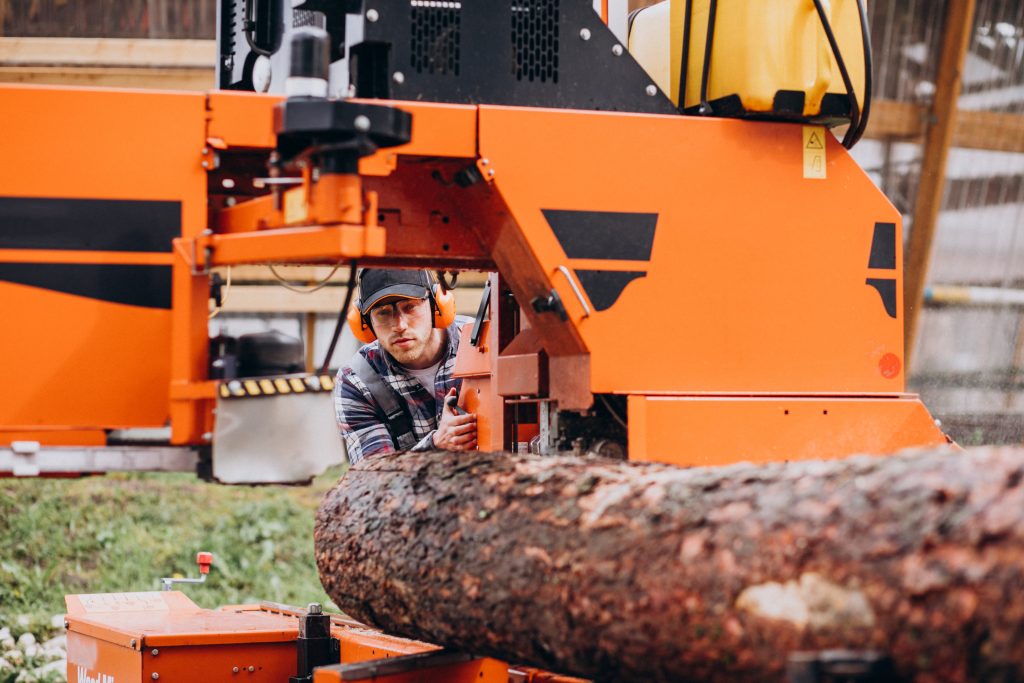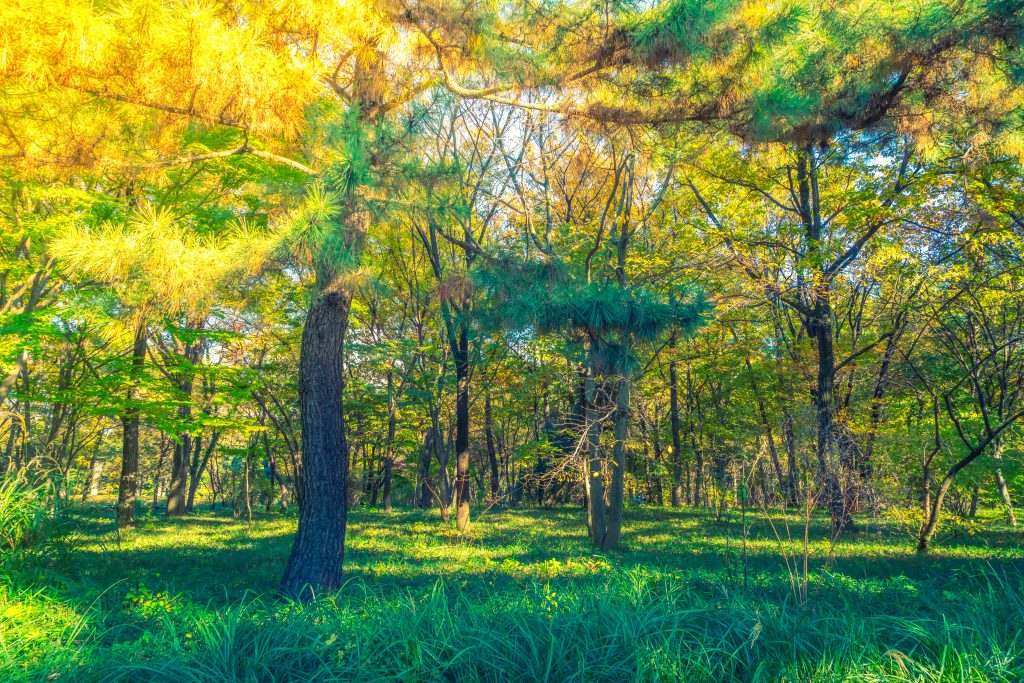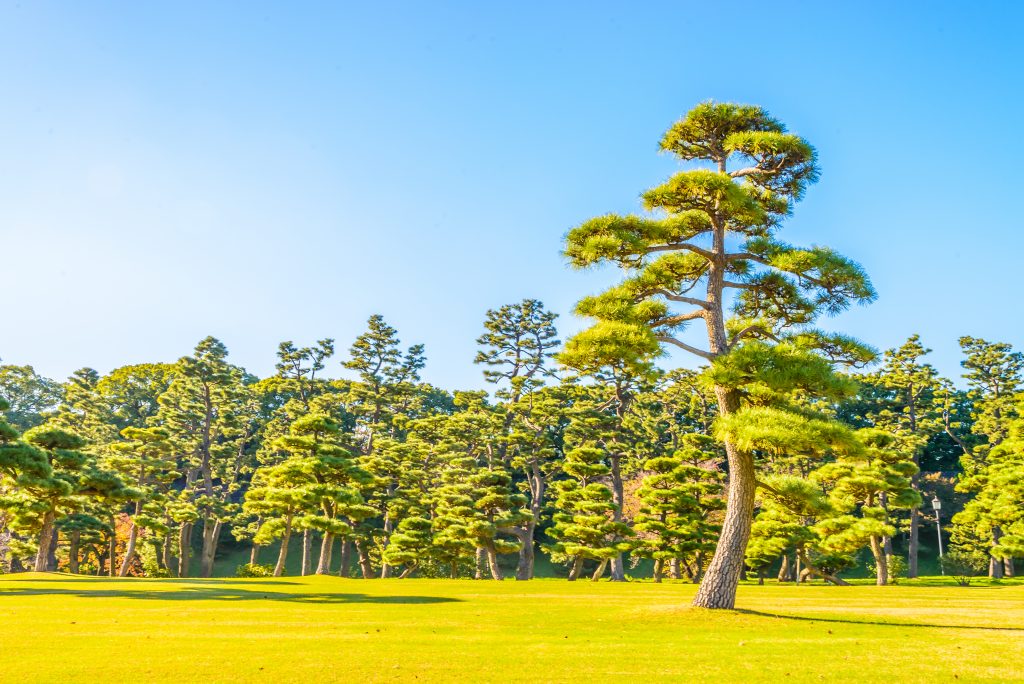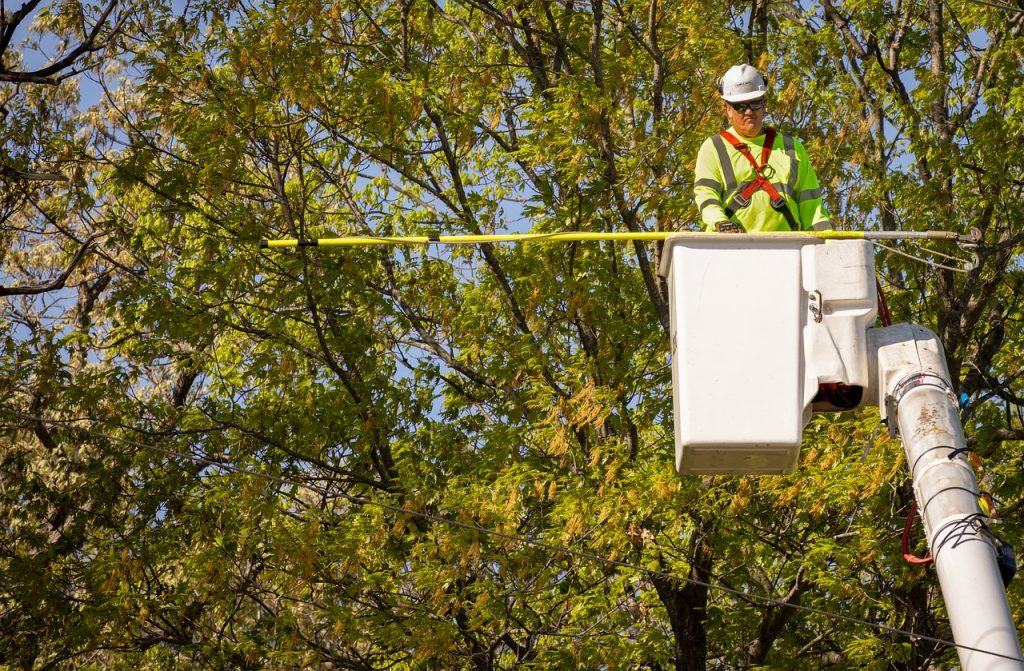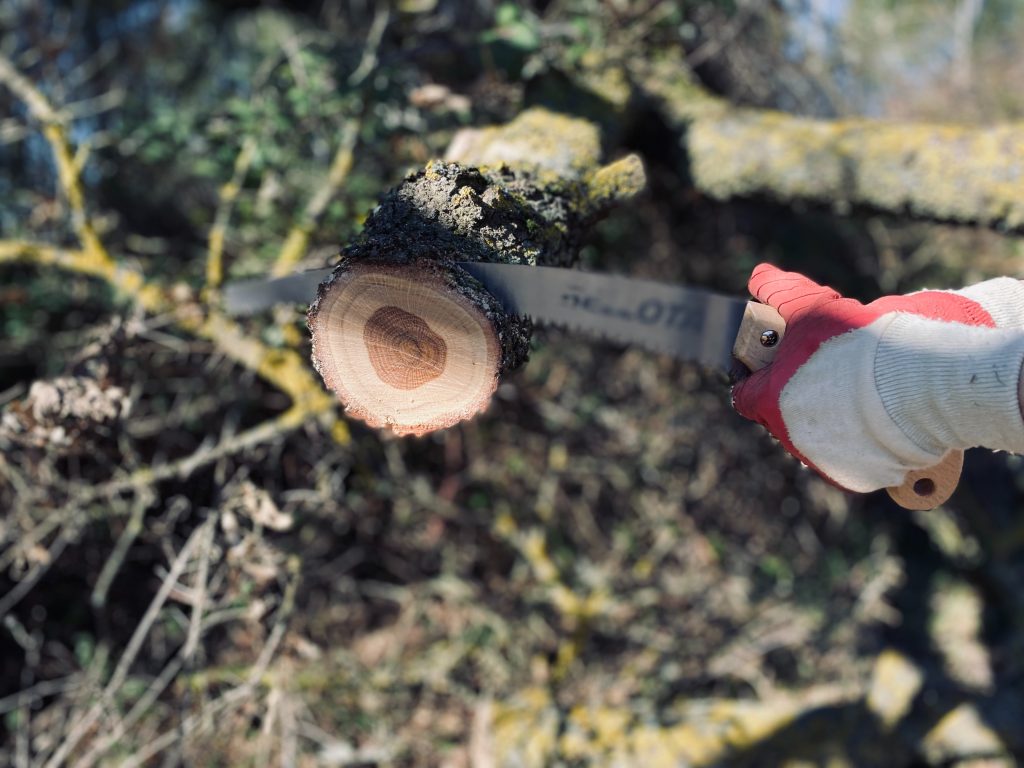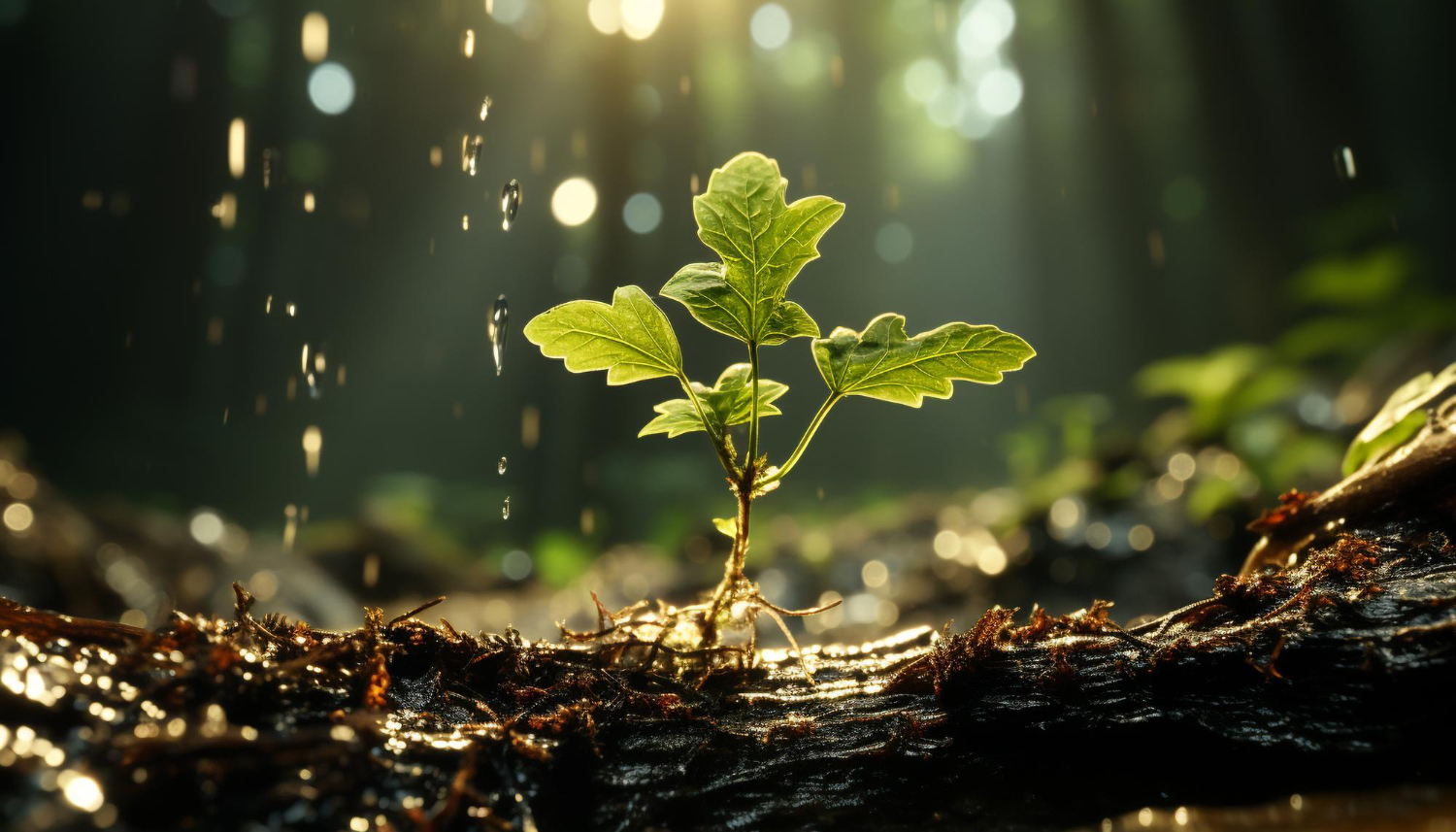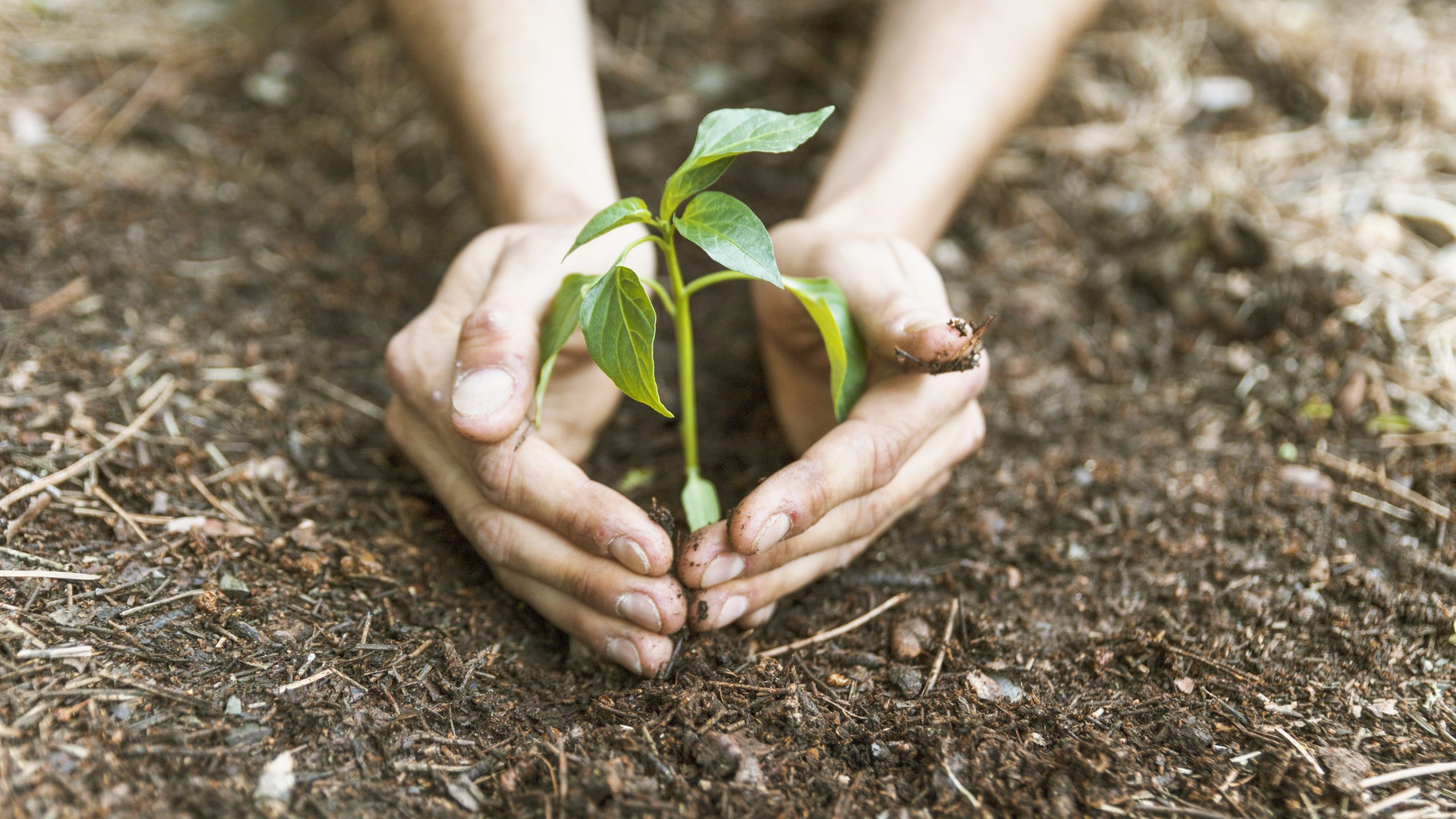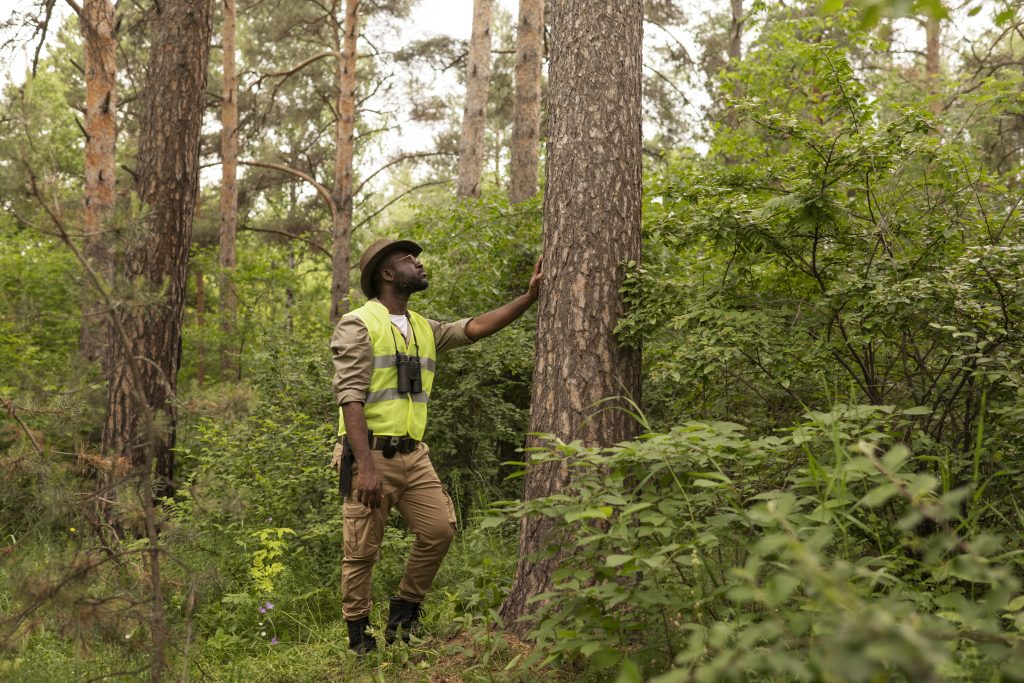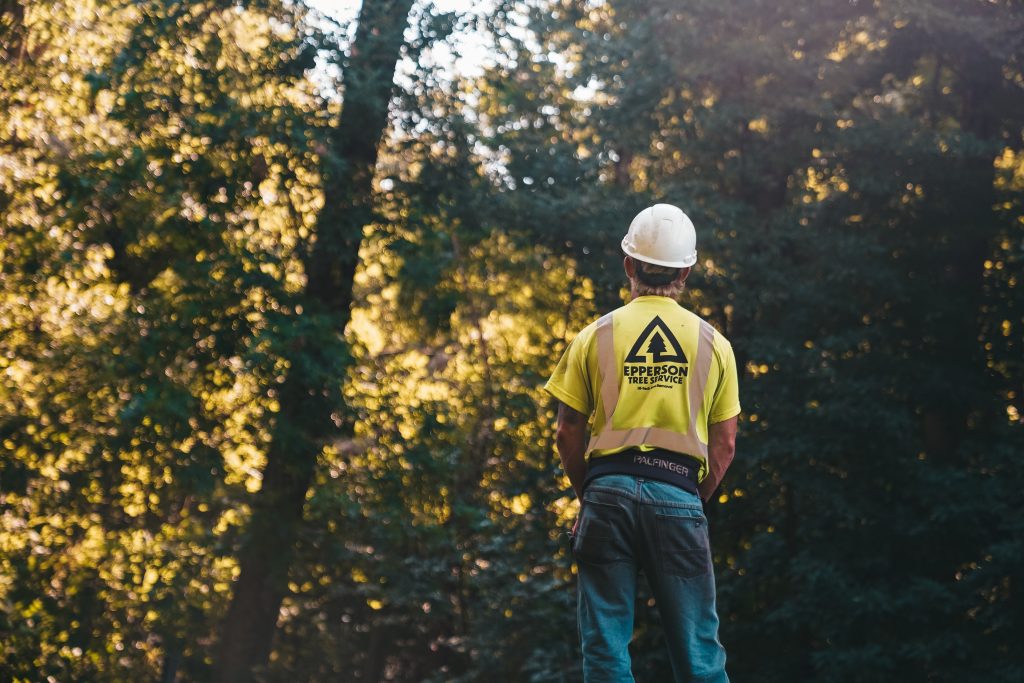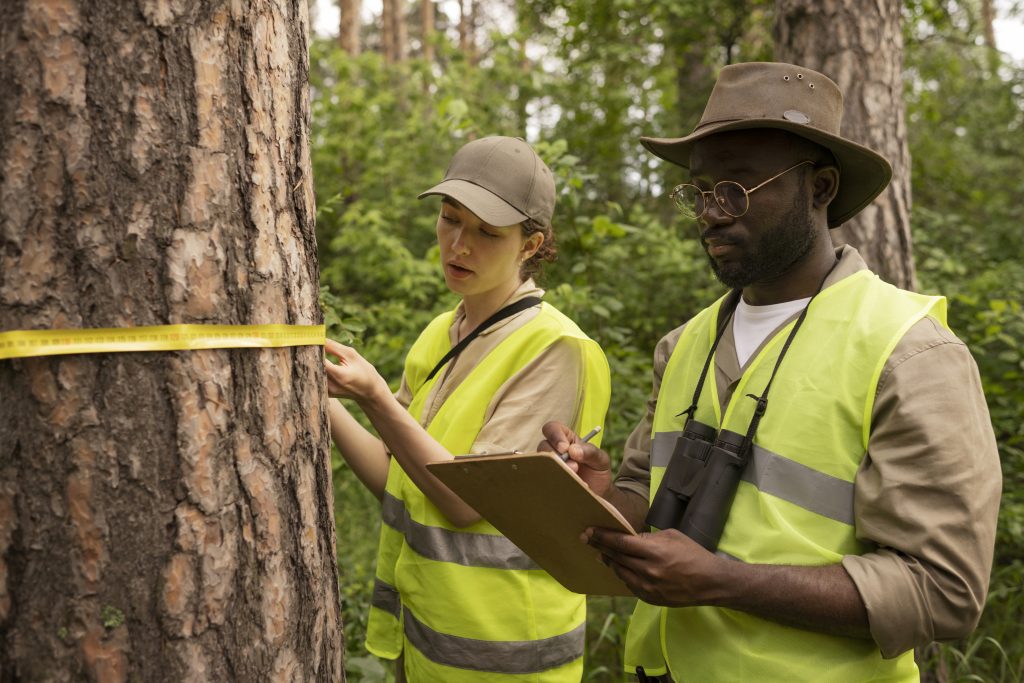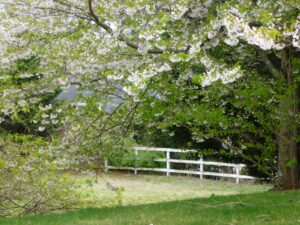How to Seed the Lawn After Tree Removal
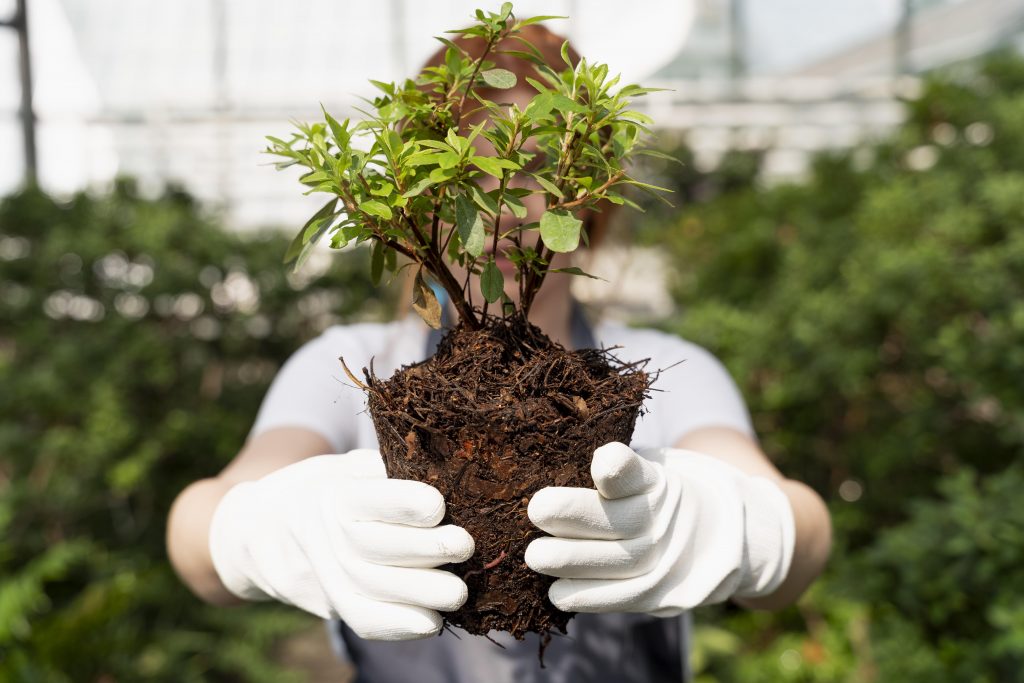
Are you ready to transform your yard after removing that old tree? Well, get ready to roll up your sleeves and get your hands dirty because we’ve got the ultimate guide on how to seed your lawn after tree removal. In this article, we’ll walk you through the step-by-step process of rejuvenating your grass and turning your yard into a lush green oasis. So grab your shovel, put on your gardening gloves, and let’s get started!
Key Takeaways
- In the past, grass seeds were planted directly on bare ground after tree removal, resulting in uneven growth.
- Experts discovered the importance of preparing the soil before seeding, including proper aeration and removal of tree roots.
- Nowadays, best practice involves soil testing, choosing the right grass seed, and proper watering and maintenance.
- Following these tips can ensure the success of your lawn seeding project.
Introduction: Lawn Seeding Techniques After Tree Removal
Seeding the lawn after tree removal can be done using a variety of techniques. When it comes to lawn seeding techniques, there are a few options to consider. Here are four methods that can help you achieve a healthy and vibrant lawn:
- Overseeding: This technique involves spreading grass seed over an existing lawn to fill in bare patches and improve overall density. It is a great way to rejuvenate your lawn after tree removal.
- Hydroseeding: Hydroseeding is a process where a mixture of grass seed, fertilizer, mulch, and water is sprayed onto the soil. This method promotes faster germination and provides better coverage, resulting in a thicker and more uniform lawn.
- Slice seeding: In this technique, a machine is used to create small grooves in the soil and deposit grass seed directly into them. This method ensures good seed-to-soil contact, increasing the chances of successful germination.
- Hand seeding: If you have a small lawn or prefer a more hands-on approach, hand seeding is a viable option. Simply spread the grass seed evenly over the soil by hand and lightly rake it in.
Once you have chosen a seeding technique, it is crucial to take proper care of your lawn post-seeding. This includes regular watering, mowing at the appropriate height, and avoiding heavy foot traffic until the new grass is well-established.
Now that you know the various lawn seeding techniques and the importance of post-seeding care, let’s delve into the history of lawn seeding techniques after tree removal.
History of Lawn Seeding Techniques After Tree Removal
When it comes to establishing a healthy and lush lawn after removing a tree, you might be interested in learning about the various techniques that have been used over time. The history of lawn seeding techniques after tree removal is a fascinating one, filled with innovation and a quest for the best practices. In the past, people would simply remove the tree stump and plant grass seeds directly on the bare ground. However, this method often resulted in uneven growth and patchy areas. Over time, experts discovered that preparing the soil before seeding is crucial for success. Traits such as proper soil aeration, removing any remaining tree roots, and adding organic matter to improve soil fertility became common practices. Nowadays, the best practice for seeding a lawn after tree removal involves several steps, including soil testing, choosing the right grass seed, and proper watering and maintenance. By following these tips, you can ensure the success of your lawn seeding project and enjoy a beautiful, healthy lawn for years to come.
Tips
When it comes to creating a lush and healthy lawn, choosing the right seeds is crucial. You want to select seeds that are well-suited to your climate and soil type, as this will ensure optimal growth and resilience. Additionally, preparing the soil is just as important as choosing the right seeds, as it provides a solid foundation for the grass to grow. This involves removing any weeds or debris, aerating the soil, and adding necessary nutrients. Once your seeds are planted and the soil is prepared, proper watering and maintenance are key to ensure successful growth. Regular watering, as well as mowing and fertilizing as needed, will help your lawn thrive and maintain its lush appearance.
Choosing the Right Seeds
To choose the right seeds for your lawn, you’ll want to consider factors like the amount of sunlight and type of soil in your yard. There are different seed varieties available, each suited for specific conditions. For areas with full sunlight, opt for sun-loving grass seeds like Bermuda or Kentucky bluegrass. If your lawn is mostly shaded, choose shade-tolerant varieties such as fine fescue or creeping red fescue. It’s also important to consider the planting method that best suits your needs. You can choose to sow seeds directly onto the soil, or you may prefer to use a seed spreader for more even distribution. Now that you have an understanding of seed varieties and planting methods, let’s move on to preparing the soil for optimal growth.
Preparing the Soil
Once you’ve chosen the right seeds for your yard, it’s important to prepare the soil properly for optimal growth. Before seeding, it’s recommended to conduct a soil test to determine its pH level and nutrient content. This will help you understand what amendments, such as lime or fertilizer, are needed to create a favorable environment for your new grass. Additionally, weed control is essential to prevent unwanted plants from competing with your lawn. Remove any existing weeds by hand or use an appropriate herbicide, following the instructions carefully. Once the soil is tested and weed-free, it’s time to prepare it for seeding. Start by loosening the top few inches of soil, either by tilling or raking, to create a fine and level surface. This will ensure good seed-to-soil contact and allow the roots to penetrate easily. With the soil prepared, you can now move on to the next step of watering and maintenance to help your newly seeded lawn thrive.
Watering and Maintenance
Make sure you’re watering your newly seeded yard regularly to keep the soil moist and promote healthy growth. Proper watering techniques are crucial for successful lawn maintenance. After seeding, it’s important to water the area frequently, but not excessively. Watering too much can lead to shallow root growth and weak grass. Aim to water your lawn deeply, allowing the water to penetrate the soil at least 6 inches. This will encourage deep root development and make your lawn more drought-resistant. It’s best to water in the early morning or late afternoon when the temperatures are cooler, to minimize evaporation. Remember to adjust your watering schedule based on weather conditions, as rain can affect the amount of water your lawn needs. Now that you understand the importance of watering, let’s move on to the traits and best practices for maintaining a healthy lawn.
Traits and Best Practices
You should always consider the traits and best practices when seeding your lawn after tree removal. Seeding your lawn is an essential step in restoring its beauty and ensuring its health. To achieve the best results, there are certain practices you should follow and common mistakes to avoid.
Firstly, one of the best practices is to choose the right grass seed for your specific lawn conditions. Consider factors such as sunlight exposure, soil type, and climate when selecting the seed. This will ensure that the new grass grows well and blends seamlessly with the existing lawn.
Another important practice is to prepare the soil properly before seeding. Common mistakes include neglecting to remove tree stumps or roots, which can hinder the growth of new grass. It is also crucial to loosen the soil and remove any debris or rocks to create a favorable environment for the seed to germinate.
Once you have prepared the soil, it is time to spread the seed evenly. This can be done by hand or using a spreader. Be sure to follow the recommended seeding rate for the specific seed you have chosen. Over-seeding or under-seeding can lead to uneven growth and patchy areas in your lawn.
Key Steps
Now that you understand the traits and best practices for lawn seeding after tree removal, let’s dive into the key steps you need to take. By following these steps, you can ensure that your newly seeded lawn flourishes and thrives.
Here are the key steps to consider:
- Choosing the right grass: Before you start seeding, it’s important to choose the right type of grass that suits your climate, soil conditions, and lawn usage. Consider factors such as shade tolerance, drought resistance, and maintenance requirements when making your decision.
- Preparing the soil: Proper soil preparation is crucial for successful seed germination. Remove any debris and rocks from the area, and then loosen the soil using a garden fork or tiller. This will create a suitable environment for the seeds to establish roots.
- Spreading the seed: Evenly spread the grass seed over the prepared soil using a broadcast spreader or by hand. Make sure to follow the recommended seeding rate for the specific grass type you have chosen.
- Watering: Immediately after seeding, water the area thoroughly to ensure good seed-to-soil contact. Keep the soil moist by watering lightly multiple times a day, especially during the germination period.
- Post seeding maintenance: Once the grass starts to grow, gradually reduce the frequency of watering but increase the amount of water each time. This will encourage deep root growth and a stronger, healthier lawn.
Goals
To achieve your desired outcome, it’s important to establish clear goals for your newly seeded grass. By setting specific goals, you can create a lawn seeding timeline and ensure proper post-seeding care. Here’s a breakdown of the goals you should aim for:
| Goals | Timeline |
|---|---|
| Germination | 7-21 days |
| Root development | 4-6 weeks |
| Establishment | 8-12 weeks |
During the germination phase, your focus should be on providing adequate moisture and protection to the newly seeded area. Watering lightly and frequently will help keep the soil consistently moist. Once the grass starts to grow, shift your attention to root development. This is the time to gradually reduce watering frequency and increase the depth to encourage deep root growth. Finally, the establishment phase is crucial for the grass to become resilient and healthy. Continue to provide regular irrigation and mow the grass when it reaches the recommended height.
Habits for Successful Lawn Seeding After Tree Removal
Establishing a consistent watering schedule and providing adequate nutrients are essential for the successful growth of newly seeded grass after a tree is removed. To ensure the best results, here are some tips for success and common challenges to be aware of.
Firstly, it is crucial to water the newly seeded area regularly. Watering deeply and frequently will promote root development and prevent the soil from drying out. It is recommended to water the area at least once a day, keeping the soil moist but not waterlogged.
In addition to regular watering, providing adequate nutrients is vital for the healthy growth of the new grass. Applying a high-quality fertilizer specifically formulated for newly seeded lawns will help promote strong root growth and lush green grass. Be sure to follow the instructions on the fertilizer package for the correct application rate.
One common challenge when seeding a lawn after tree removal is weed competition. Weeds can quickly invade the bare soil and compete with the new grass for nutrients and water. To prevent this, consider using a pre-emergent herbicide before seeding to suppress weed growth.
Now, let’s dive into a real-life story that demonstrates the importance of these habits for successful lawn seeding after tree removal.
A Real-Life Story
Providing consistent watering and proper nutrients are crucial for the successful growth of newly seeded grass after removing a tree, as demonstrated by this real-life story. A homeowner, let’s call him John, recently had a large tree removed from his front yard. He decided to seed the area with grass to restore the beauty of his lawn. John followed the recommended steps for lawn seeding after tree removal, including preparing the soil, spreading the grass seed evenly, and covering it with a thin layer of straw. However, what truly made a difference in the success of his lawn was his dedication to watering and providing the necessary nutrients.
John diligently watered the newly seeded area every day to keep the soil moist. He also applied a slow-release fertilizer to provide the grass with the nutrients it needed to grow strong and healthy. As a result of his efforts, the grass started germinating within a week, and after a few months, a lush green lawn replaced the bare patch where the tree once stood.
This real-life story is just one of many success stories when it comes to seeding grass after tree removal. It serves as a reminder of the importance of consistent watering and proper nutrients in achieving a vibrant and thriving lawn. Now, let’s delve into some quotes from experts in the field who can further guide us in this process.
Quotes
One expert in the field emphasizes the importance of consistent watering and proper nutrients for a successful grass growth. According to this expert, “Watering is crucial for newly seeded lawns. Keep the soil consistently moist, but avoid overwatering as it can lead to disease and shallow root growth.” Additionally, providing the right nutrients is essential. The expert suggests, “Using a balanced fertilizer with a high phosphorus content can promote root development and overall grass health.”
Another expert shares some secrets for successful lawn seeding. They say, “Before seeding, make sure to prepare the soil properly. Remove any debris, rocks, or old grass to create a smooth surface for the new seeds.” They also advise, “Aeration can greatly improve seed germination. It allows better water and nutrient penetration into the soil, resulting in healthier grass growth.”
It’s important to note that these quotes highlight the significance of consistent watering, proper nutrients, soil preparation, and aeration when seeding a lawn. These secrets, when followed correctly, can greatly increase the chances of a successful grass growth.
Secrets
Now that you’ve gathered inspiration from some insightful quotes, let’s dive into the secrets of successful lawn seeding techniques after tree removal. Seeding your lawn can be a daunting task, but with the right techniques and factors for success, you can achieve a lush and thriving lawn in no time.
One important factor to consider is the timing of your seeding. The best time to seed your lawn is in the early fall or spring when the soil temperature is ideal for seed germination. This will give your grass the best chance to establish strong roots before the harsh conditions of summer or winter.
Another key secret is proper soil preparation. Before seeding, make sure to remove any debris or tree roots left behind from the removal process. Loosen the soil to a depth of six inches and mix in compost to improve drainage and nutrient levels.
When it comes to seeding, make sure to choose the right type of grass seed for your region and soil conditions. Spread the seed evenly using a seed spreader and lightly rake it into the soil for good seed-to-soil contact.
With these secrets in mind, you’re now ready to gain some valuable insights on lawn seeding techniques after tree removal.
Insights on Lawn Seeding Techniques After Tree Removal
When it’s time to seed your yard after removing a tree, it’s important to consider the timing and soil preparation for successful lawn seeding techniques. First, make sure to remove any debris left behind from the tree removal process, such as roots or rocks, as they can interfere with the growth of new grass. Once the area is clear, prepare the soil by loosening it with a garden rake or tiller. This will help create a favorable environment for the seeds to germinate.
Before seeding, check the weather forecast to ensure a few days of mild temperatures and minimal rainfall. This will give the grass seeds the best chance of establishing themselves without being washed away or damaged. After spreading the seeds evenly across the prepared soil, lightly rake them in to ensure good seed-to-soil contact.
To promote proper germination, watering is crucial. Keep the seeded area consistently moist, but avoid overwatering, as this can lead to fungal diseases and weak root development. Water the lawn daily, applying enough water to penetrate the top inch of soil. As the grass begins to grow, gradually reduce the frequency of watering while increasing the amount of water applied each time.
Post-seeding maintenance is essential for the success of your new lawn. Regularly mow the grass once it reaches a height of three to four inches, taking care not to remove more than one-third of the grass blades in a single mowing. Additionally, fertilize the lawn about six weeks after seeding to provide essential nutrients for healthy growth.
Benefits of Lawn Seeding Techniques After Tree Removal
To maximize the benefits of your lawn seeding techniques after removing a tree, it’s important to properly time the seeding process and prepare the soil accordingly. Seeding your lawn after tree removal has numerous advantages. Firstly, it helps to fill in the bare spots left behind by the tree’s roots, ensuring a more uniform and attractive lawn. Additionally, lawn seeding can help to prevent soil erosion, as the new grass roots will hold the soil in place and prevent it from washing away during heavy rain. Moreover, by seeding your lawn, you can improve the overall health and vitality of your grass, as the new seedlings will compete with weeds for resources and create a denser, healthier turf. Lastly, lawn seeding after tree removal can enhance the aesthetic appeal of your outdoor space, giving it a fresh and rejuvenated look. By implementing proper seeding techniques, such as using high-quality grass seed and providing adequate watering and fertilization, you can enjoy these benefits and have a lush, green lawn in no time. Moving forward, there are also valuable lessons to learn from this process.
Lessons
When it comes to choosing the right seeds for your lawn, there are a few key factors to consider. First, you need to determine the type of grass that is best suited for your climate and soil conditions. Next, consider the specific needs of your lawn, such as high traffic areas or shaded spots. Lastly, look for seeds that are certified and labeled for quality assurance. Once you have selected the right seeds, it is important to understand the time to germination. This can vary depending on the type of grass you have chosen, but generally, it takes between 7-21 days for seeds to germinate. During this time, it is crucial to provide proper care and attention to ensure successful growth. This includes watering regularly, avoiding foot traffic, and keeping the soil moist. Finally, after seeding your lawn, there are a few post-seeding care tips to keep in mind. Avoid mowing the lawn until the new grass has reached a height of at least 3 inches. Additionally, continue to water the lawn regularly to promote healthy growth and establish strong roots. Following these tips will help you achieve a lush and vibrant lawn that you can enjoy for years to come.
Choosing the Right Seeds
You’ll want to make sure you choose the right seeds for your lawn after tree removal. When it comes to seed varieties, there are a few factors to consider. First, think about the type of grass that is best suited for your climate and soil conditions. Common seed varieties include Bermuda grass, Kentucky bluegrass, and fescue. Each has its own characteristics, such as drought tolerance or shade tolerance. Next, consider the planting techniques. Before seeding, make sure the soil is properly prepared by removing any debris or old tree roots. Then, spread the seeds evenly using a broadcast spreader or by hand. Finally, lightly rake the seeds into the soil and water thoroughly. By choosing the right seeds and using proper planting techniques, you’ll give your lawn the best chance for success.
As you wait for the seeds to germinate, it’s important to understand the time it takes for them to sprout. The time to germination can vary depending on the type of grass you have chosen. For example, Bermuda grass typically germinates within 7-10 days, while Kentucky bluegrass may take 14-21 days. It’s important to be patient during this stage and provide the seeds with consistent moisture. Water the area regularly, keeping the soil moist but not waterlogged. Additionally, avoid walking on the newly seeded area to prevent disturbing the seeds. With proper care and attention, you’ll soon see green sprouts emerging from your lawn, signaling the successful germination of your chosen seeds.
Time to Germination
The time it takes for the seeds to germinate can vary depending on the type of grass you’ve chosen. Typically, most grasses take about 7-14 days to germinate, but some varieties may take up to 21 days. It’s important to be patient during this time, as the seeds need the right conditions to sprout and establish roots. While waiting for germination, it’s crucial to keep the soil consistently moist but not waterlogged. This will help the seeds absorb water and nutrients, promoting healthy growth. Once the grass starts to sprout, it’s a sign that the lawn recovery process has begun. From here, you can transition into the next section to learn about post-seeding care tips for maintaining a lush and thriving lawn.
Post-Seeding Care Tips
For optimal results, it’s essential to water your newly seeded grass regularly to keep the soil moist. After seeding your lawn, post-seeding care is crucial to ensure healthy growth and establish a lush, green turf. Once you’ve finished seeding, it’s recommended to water the area thoroughly, making sure the soil is consistently moist. This will aid in seed germination and prevent the soil from drying out. Continue watering the seeded area daily, keeping the soil moist but not saturated. Avoid overwatering as it can lead to shallow root growth and fungal diseases. Additionally, it’s important to avoid walking or mowing on the newly seeded grass until it has reached a height of at least 3 inches. This will allow the young seedlings to establish a strong root system. By following these post-seeding care tips, you’ll give your lawn the best chance to thrive and flourish. Now let’s move on to routines {yt} that will help maintain your lawn’s health and beauty.
Routines
Make sure to establish a consistent routine for watering the newly seeded lawn after tree removal. Establishing good watering habits is one of the secrets to success when it comes to growing a healthy and vibrant lawn. Consistency is key, as it ensures that the seeds receive adequate moisture for germination and growth.
To start, water the newly seeded lawn lightly but frequently. Aim to keep the soil consistently moist, but not overly saturated. This can be achieved by watering the lawn two to three times a day for short durations. Avoid heavy watering, as it can lead to runoff and uneven moisture distribution.
As the grass begins to germinate and grow, adjust your watering routine accordingly. Gradually reduce the frequency of watering but increase the duration. This will encourage the roots to grow deeper into the soil, ensuring better drought tolerance in the future.
It is important to monitor the moisture levels of the soil regularly. Use a moisture meter or simply dig a small hole to check the soil’s moisture content. Adjust your watering routine based on the soil’s moisture needs.
Pros and Cons
Establishing a consistent watering routine has its pros and cons when it comes to growing a healthy and vibrant lawn. Let’s start with the pros. A regular watering schedule ensures that your lawn receives the necessary amount of moisture it needs to thrive. It helps to prevent under-watering, which can lead to dry and brown patches. Additionally, a consistent watering routine promotes deep root growth, making your lawn more resilient to drought conditions.
On the other hand, there are also some cons to consider. Over-watering is a common mistake that can have detrimental effects on your lawn. Too much water can lead to shallow root development, making your turf more susceptible to disease and pests. Moreover, excessive watering can also contribute to water wastage and higher utility bills.
To strike the right balance, it’s important to understand your lawn’s specific watering needs. Factors such as grass type, soil composition, and weather conditions should all be taken into account. By monitoring the moisture levels and adjusting your watering routine accordingly, you can avoid both under-watering and over-watering.
Now that you understand the pros and cons of establishing a watering routine, let’s move on to the dos and don’ts when it comes to watering your lawn.
Dos and Dont’s
It’s important to understand the dos and don’ts when it comes to watering your lawn. Proper watering is crucial for maintaining a healthy and lush lawn, while common mistakes can lead to wasted water, overwatering, or even damaging your grass. To help you navigate this important task, here are some key dos and don’ts to keep in mind:
| Dos | Don’ts |
|---|---|
| Water deeply | Water shallowly |
| Water in the morning | Water in the evening |
| Water infrequently | Water too frequently |
| Water evenly | Water unevenly |
By following these dos, you can ensure that your lawn receives the right amount of water, promoting deep root growth and overall health. On the other hand, it’s important to avoid the common mistakes listed in the don’ts column. For example, watering shallowly can lead to shallow root systems, making your lawn more susceptible to drought and disease. Watering in the evening may cause the grass to stay wet overnight, increasing the risk of fungal diseases. Overwatering can drown the roots and cause the grass to become weak and vulnerable.
Understanding these dos and don’ts will set you on the right path to proper lawn watering. But what are the specific mistakes you should avoid? Let’s take a closer look in the next section.
Mistakes to Avoid
To ensure a healthy and vibrant lawn, it’s crucial to avoid these common watering mistakes. One of the most common mistakes people make is overwatering their lawn. While it may seem like more water is better, excessive watering can lead to shallow root growth and increase the risk of diseases. Another mistake to avoid is watering at the wrong time of day. Watering your lawn during the hottest part of the day can result in most of the water evaporating before it can be absorbed by the soil. Instead, water your lawn in the early morning or late afternoon to allow the water to penetrate deeper into the soil. Additionally, be mindful of the frequency of watering. Watering too frequently can cause the soil to become waterlogged, leading to root rot and other issues. Instead, water deeply but less frequently to encourage deep root growth. Finally, make sure to properly troubleshoot any issues with your irrigation system. Check for leaks, clogs, or misaligned sprinkler heads regularly to ensure efficient and effective watering. By avoiding these common watering mistakes and troubleshooting any issues, you can maintain a lush and healthy lawn.
Key Takeaways
One of the key takeaways is that avoiding common watering mistakes and regularly troubleshooting your irrigation system are essential for maintaining a healthy and vibrant lawn. By developing good watering habits and sticking to a routine, you can ensure that your lawn receives the right amount of water it needs to thrive. It’s important to avoid overwatering, as this can lead to shallow root growth and increase the risk of disease. On the other hand, underwatering can cause the grass to become weak and susceptible to drought stress. Regularly checking your irrigation system for leaks, clogs, or malfunctioning sprinkler heads is also crucial. This will help you identify and address any issues before they cause damage to your lawn. By making these habits and routines a part of your lawn care regimen, you can maintain a lush and healthy yard.
When it comes to seeding your lawn after tree removal, specific action steps can ensure successful growth.
Specific Action Steps for Lawn Seeding After Tree Removal
When it comes to seeding your lawn after tree removal, there are a few key points to consider. First, understanding the ideal seeding timeline is crucial for the success of your lawn. Next, you’ll need to learn about soil preparation techniques to create the optimal environment for seed germination. Lastly, choosing the right seed type is important to ensure that your new lawn thrives in your specific climate and conditions. By following these steps, you’ll be well on your way to a lush and healthy lawn.
Ideal Seeding Timeline
The ideal time to seed the lawn after tree removal is usually in the spring or fall. These seasons provide the optimal conditions for successful grass growth. When it comes to seeding techniques, there are a few key factors to keep in mind. First, make sure to choose the right grass seed for your specific climate and soil type. This will ensure that the grass has the best chance of thriving. Additionally, be sure to prepare the soil properly by removing any debris and loosening it with a rake or tiller. Common mistakes to avoid include overseeding, as this can lead to overcrowding and weak grass, and neglecting to water the newly seeded area adequately. By following these ideal seeding techniques and avoiding common mistakes, you can lay the foundation for a healthy and vibrant lawn. Now, let’s move on to soil preparation techniques.
Soil Preparation Techniques
To properly prepare your soil, start by removing any debris and loosening it with a rake or tiller. This will help create a smooth surface for seeding and allow the roots to penetrate easily. After clearing the area, it’s important to test the soil’s pH level and adjust it if necessary. Most grasses prefer a slightly acidic pH of around 6.0 to 7.5. Once the pH is balanced, apply a layer of compost or organic matter to improve the soil’s fertility and structure. This will provide essential nutrients and promote healthy root development. Before seeding, water the soil thoroughly to ensure it is evenly moist. Proper watering is crucial for seed germination and establishment. It’s important to keep the soil consistently moist, but not waterlogged, throughout the germination process. This will help the seeds to sprout and grow into a lush lawn. Now that you’ve prepared your soil, it’s time to choose the right seed type for your lawn.
Choosing Seed Type
Once you’ve decided on the type of grass you want, consider the climate and maintenance requirements before choosing the seed type. Different grasses thrive in different climates, so it’s important to choose a seed type that is well-suited to your region. For example, if you live in a hot and dry climate, you may want to choose a drought-resistant variety. On the other hand, if you live in a cooler climate with lots of shade, you’ll need to select a seed type that can tolerate those conditions. Additionally, consider the maintenance requirements of the seed type. Some grasses require more frequent mowing and watering, while others are low maintenance. By taking these factors into account, you can ensure that you choose the right seed type for your lawn.
Frequently Asked Questions
How Long Does It Typically Take for Grass to Grow After Seeding the Lawn Following Tree Removal?
To speed up grass growth after seeding the lawn following tree removal, you can try methods like watering regularly, providing adequate sunlight, and applying fertilizer. You can also consider using a different type of grass seed for your lawn after tree removal.
Can I Use the Same Grass Seed for My Lawn That Was Used Before the Tree Removal?
Yes, you can use the same grass seed for your lawn after tree removal, but there are also alternatives available. It’s important to prepare the soil properly before seeding to ensure successful growth.
Is It Necessary to Remove Any Remaining Tree Roots Before Seeding the Lawn?
Before seeding the lawn, it is essential to remove any remaining tree roots. This process has several benefits, such as preventing root competition and ensuring proper grass growth. However, if you prefer alternatives, they can be explored as well.
What Type of Fertilizer Should I Use When Seeding the Lawn After Tree Removal?
When seeding the lawn after tree removal, you should use a suitable grass seed for shady areas. Additionally, using organic fertilizer has many benefits for lawn seeding, such as promoting soil health and minimizing chemical runoff.
Are There Any Specific Watering Requirements for Newly Seeded Lawns After Tree Removal?
To ensure success when watering your newly seeded lawn after tree removal, follow these techniques: water lightly multiple times a day to keep the surface moist, avoid overwatering, and choose the best time to seed the lawn for optimal growth.
If you need a tree service in Utah, you can call:
Truco Services, Inc.
4640 Commerce Drive
Murray, Utah 84107
(801) 466-8044
https://truetreeservices.com/
